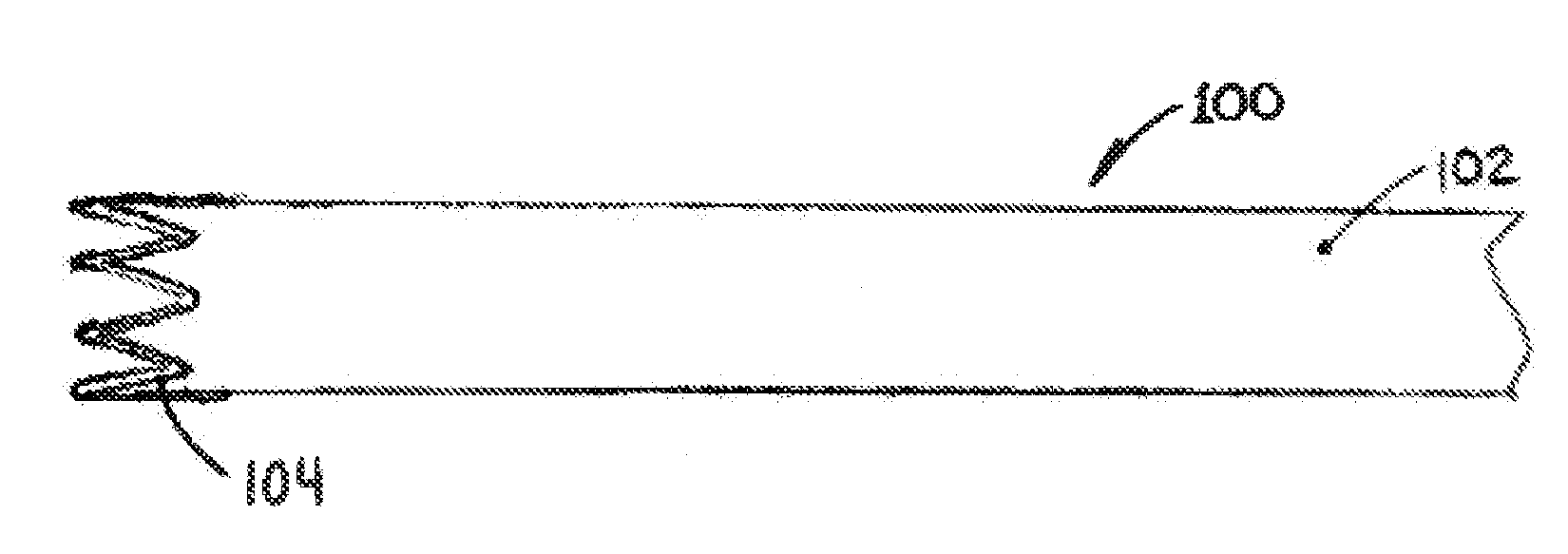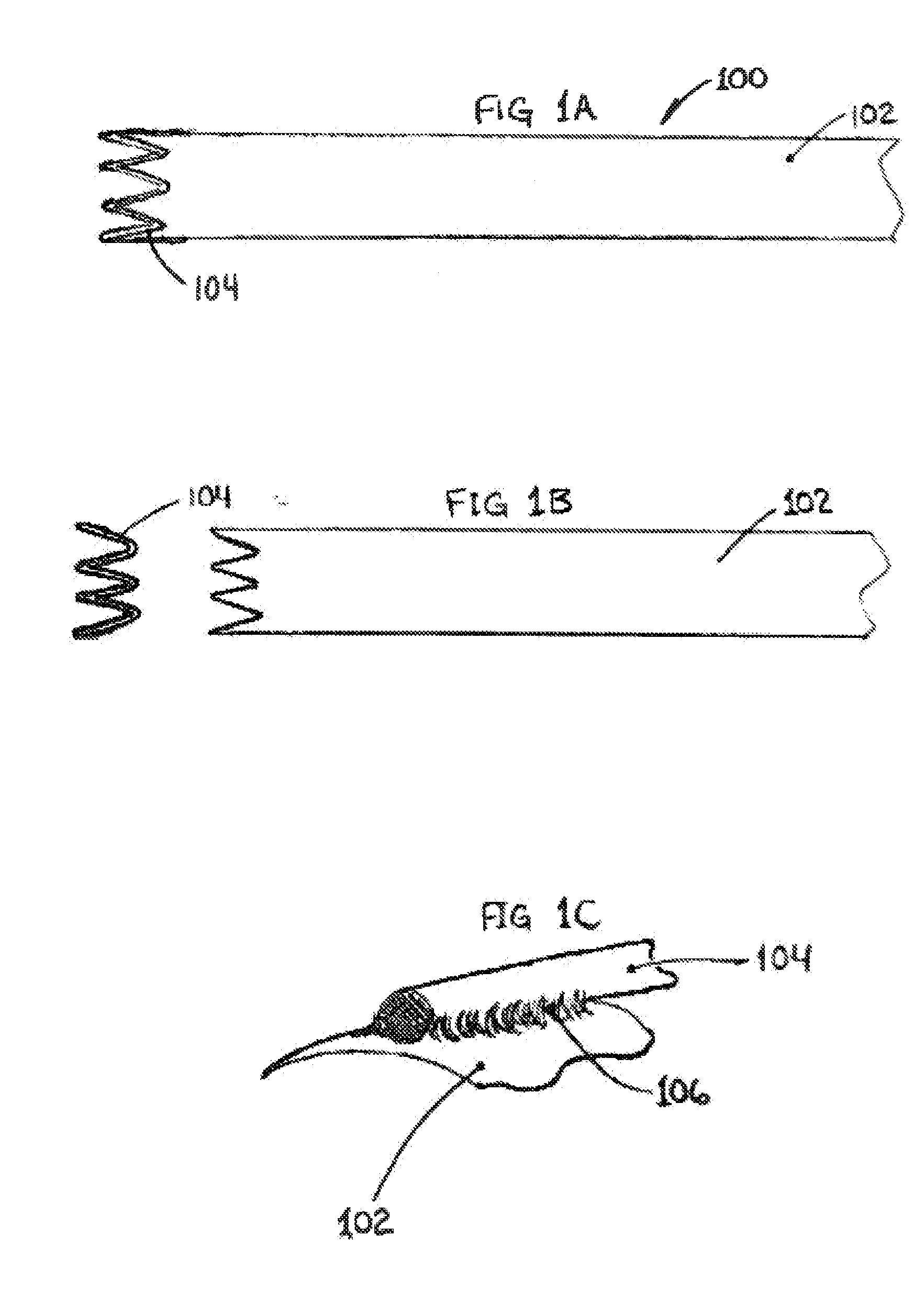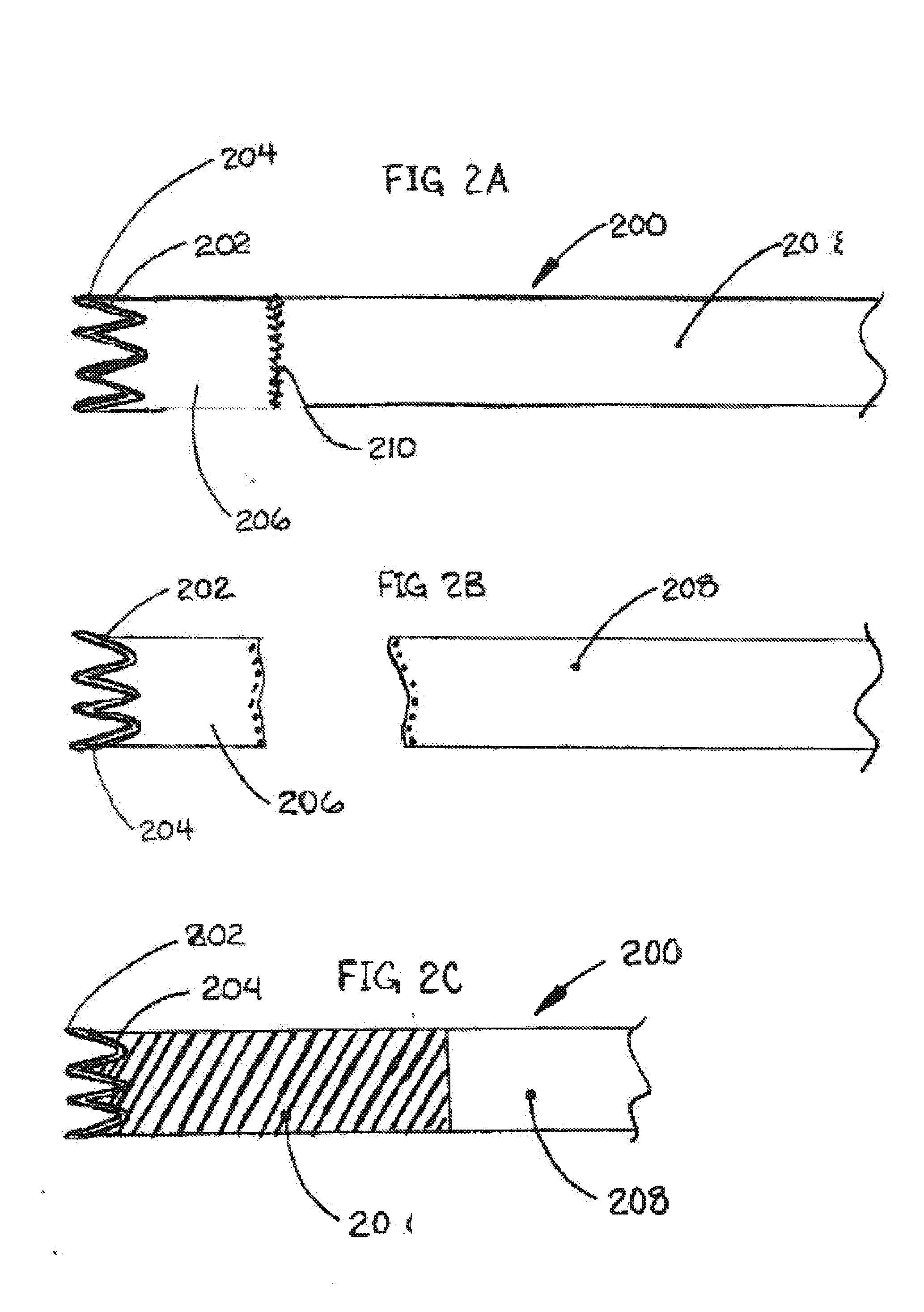Medical apparatus and method of making the same
a technology of medical equipment and a method of making it, applied in the field of medical equipment, can solve the problems of obesity and related health problems, organ failure and even death, and the percentage of overweight young people is on the ris
- Summary
- Abstract
- Description
- Claims
- Application Information
AI Technical Summary
Benefits of technology
Problems solved by technology
Method used
Image
Examples
example 1
[0091]In this example, a sleeve was fabricated and attached to an anchoring component with a releasable component, e.g., a bioabsorable material. A stainless steel mandrel and having an outer diameter of about 26 mm and a length of about 46 cm was obtained. An ePTFE sacrificial tube was pulled over the mandrel. The sacrificial tube had a wall thickness of about 0.01 mm, a length of about 40 cm, and an inner diameter of about 20 mm. This sacrificial tube was used in construction of the sleeve and would later be discarded.
[0092]Next, a substantially non-porous ePTFE film with a thermal adhesive layer FEP on one side was obtained. The composite film had a width of about 150 mm, a thickness of about 0.0025 mm, an isopropyl alcohol bubble point (IBP) of greater than about 0.6 MPa, and a tensile strength of about 309 MPa in the length direction (the strongest direction).
[0093]This first film was cut to be about 40 cm long. The first film with the thermal adhesive side up was longitudinall...
example 2
[0099]In this example, a sleeve was fabricated to include a releasable component along a longitudinal a portion of the length of the sleeve. The releasable component enables disruption of the sleeve after a predetermined time, allowing for increased contact between the villi and chyme.
[0100]A stainless steel mandrel having an outer diameter of about 26 mm and a length of about a 46 cm long was obtained. An ePTFE sacrificial tube was pulled over the mandrel. The sacrificial tube had a wall thickness of about 0.01 mm, a length of about 40 cm, and an inner diameter of about 20 mm. This sacrificial tube was used in construction of the sleeve and would later be discarded.
[0101]Next, a substantially non-porous ePTFE film with a thermal adhesive layer FEP on one side was obtained. The composite film had a width of about 15.2 cm, a thickness of about 0.0025 mm, an IBP of greater than about 0.6 MPa, and a tensile strength of about 309 MPa in the length direction (the strongest direction).
[01...
example 3
[0113]In this example, a sleeve was fabricated to have a porosity that changed after a predetermined time. More specifically, a sleeve was constructed to include porous and non-porous regions. The porous regions were coated with a bioabsorable material that degraded after a predetermined period of time.
[0114]A stainless steel mandrel had an outer diameter of about 26 mm and a length of about 46 cm was obtained. An ePTFE sacrificial tube was pulled over the mandrel. The sacrificial sleeve had a wall thickness of about 0.01 mm, a length of about 40 cm, and an inner diameter of about 20 mm. This sacrificial tube was used in construction of the sleeve and would later be discarded.
[0115]Next, a substantially porous ePTFE film with a thermal adhesive layer FEP on one side was obtained. The composite film had a width of about 15.2 cm, a thickness of about 0.01 mm, an MBP of about 7 KPa, and a tensile strength of about 77 MPa in the length direction (the strongest direction). Two layers of ...
PUM
 Login to View More
Login to View More Abstract
Description
Claims
Application Information
 Login to View More
Login to View More - R&D
- Intellectual Property
- Life Sciences
- Materials
- Tech Scout
- Unparalleled Data Quality
- Higher Quality Content
- 60% Fewer Hallucinations
Browse by: Latest US Patents, China's latest patents, Technical Efficacy Thesaurus, Application Domain, Technology Topic, Popular Technical Reports.
© 2025 PatSnap. All rights reserved.Legal|Privacy policy|Modern Slavery Act Transparency Statement|Sitemap|About US| Contact US: help@patsnap.com



